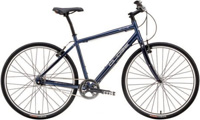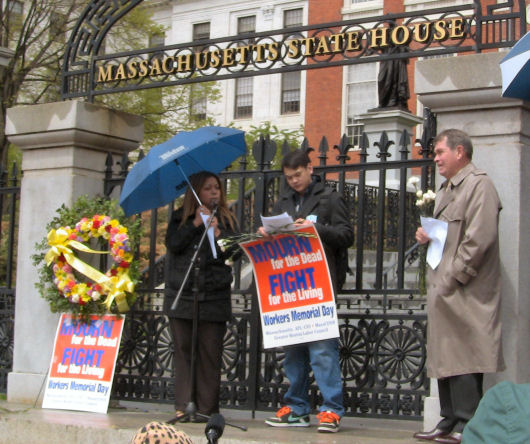Posts Tagged ‘injury’
Housing Code Violations and Over-Crowding in Boston Student Housing
The fire on April 26, 2013 at 87 Linden Street in Allston, the second serious fire in less than two years on the same block, is a tragic reminder of what can happen with overcrowded, substandard student housing.
The Fire Marshall will now investigate the cause of the Allston fire. In addition, The Boston Inspectional Services Division should examine whether the unit was overcrowded in violation of the Boston Zoning Ordinance, and whether housing codes and accessibility codes were violated. Enforcement of city ordinances is, unfortunately, inconsistent, and usually after the fact. Knowing this, landlords and realty companies frequently violate these ordinances in the name of profits. The victims are often unsuspecting college students. As a result, students, who pay high rents, are subjected to increased risks from their overcrowded housing.
The law in Massachusetts governs how homes must be safely maintained in order to prevent personal injury to occupants of the property. In Boston, zoning ordinances require building owners to declare whether their properties are single-family or multi-family units. In either case, under Boston’s zoning ordinances, under the definition of “family,” no unit may be occupied by more than four unrelated students unless the building meets much stricter building requirements.
It is also generally illegal for a landlord to create bedrooms in basements, and it may be against code to create a bedroom in an attic. No matter how it is configured, every house or apartment must have working smoke detectors throughout the unit.
Once a unit exceeds the four unrelated-occupant threshold, it technically becomes a rooming house, which makes it subject to very strict fire-prevention regulations under M.G.L. c. 148, Sec. 26I and other regulations. For example, a rooming house must have walls and ceilings made from fire-rated materials to slow flames in the event of a fire. Smoke detectors must be in every bedroom,
and must be interconnected. Even more important, every boarding house must have a working sprinkler system. Boarding houses must also meet accessibility guideline and provide multiple means of egress for upper floors, which may include fire escapes.
Real estate brokers and leasing agents share responsibility for student overcrowding and exposure to risk from substandard housing. A quick look at any leasing agent’s website will reveal scores of units available for student occupancy which are intended to house more than four unrelated individuals. Leasing agents collect a single month’s rent, sometimes more, for their services. Since they also take the responsibility to collect signatures on leases, they know exactly how many students will be in the unit. Leasing agents simply cannot claim ignorance of the laws regarding overcrowding.
Who May Be Liable
It is our firm’s opinion that violations of the boarding house rules are evidence of negligence and may create liability for the responsible landlord.
We also believe that knowing and willful violations of the boarding house rules by real estate companies or leasing agents may subject them to liability as well. Violations of these standards may also be violations of the Massachusetts Consumer Protection Act, which may subject landlords and their leasing agents to multiple damages and attorneys’ fees.
Other Cases
Injuries and death from substandard housing may also lead to criminal charges against landlords. For example, in January 2012, two absentee landlords were convicted of manslaughter after a fire in an illegal apartment in Quincy led to the deaths of three tenants. The landlords were accused of wantonly violating building and fire codes.
The question of the enforceability of rooming house regulations is also pending at the Massachusetts Supreme Judicial Court. In that case, civil claims were brought against a Worcester landlord for violation of the Worcester zoning bylaw. In that city, no more than four unrelated persons can occupy a home. The city brought the violation because there were more than four students in the unit. The decision in that case is expected to be handed down in the next few weeks.
Update: The City of Boston later cited the owner of the two-family structure, Anna Belokurova, for running an illegal rooming house and not obtaining the permits needed to create bedrooms in the basement, according to The Boston Globe. Read more.
Related Articles:
Woman killed, firefighters and occupants injured in raging Allston fire, Boston Herald.
One dead, 15 injured in Allston house fire, The Boston Globe.
Jury finds landlords guilty of involuntary manslaughter in Quincy apartment fire, The Patriot Ledger.
About Breakstone, White & Gluck
Breakstone, White & Gluck of Boston has over 85 years combined experience represented injured clients in Massachusetts. If you or a loved one has been injured, learn your rights. For a free legal consultation, contact us at 800-379-1244 or 617-723-7676 or use our contact form.
Massachusetts Law on Waivers and Releases
 The proposition is all too familiar: You or your children want to participate in an activity. It could be at school, for a sporting event, in connection with a walk-a-thon or bike-a-thon, or in some other activity where there is a risk involved. Maybe the event is really risky, such as learning to drive a race car, or learning how to rock climb. Part of the price of admission to all of these activities is your signature at the bottom of a release or waiver of liability.
The proposition is all too familiar: You or your children want to participate in an activity. It could be at school, for a sporting event, in connection with a walk-a-thon or bike-a-thon, or in some other activity where there is a risk involved. Maybe the event is really risky, such as learning to drive a race car, or learning how to rock climb. Part of the price of admission to all of these activities is your signature at the bottom of a release or waiver of liability.
The language of the typical release is usually very broad and even includes the requirement that you indemnify the organization against related claims. You will be binding not only yourself, but your family, and in the case of a wrongful death, your heirs.
Are they legal? Most of the time yes, though there are some important exceptions which will be discussed below.
The Massachusetts courts generally uphold the validity of releases and waivers that are entered into knowingly. This includes pre-accident releases as well as releases in connection with settlements. Our courts have repeatedly affirmed just how broadly Massachusetts law favors the enforcement of releases.
Simply put, a defendant ordinarily may “validly exempt itself from liability which it might subsequently incur as a result of its own negligence.” Lee v. Allied Sports Assocs., 349 Mass. 544 , 550 (1965) (car racetrack accident).
In the more recent case of Sharon v. City of Newton, 437 Mass. 99 (2002), the court enforced a release signed by a father on behalf of his daughter as a condition of her participation in cheerleading in her high school. After she was injured, the family brought suit for the school’s negligence. The release was raised as a defense, and the court strongly affirmed the enforceability of the release, citing a host of public policy arguments.
The requirements for a binding release include clear and conspicuous language, proper naming of the party, the signature of the party, and valid contractual “consideration.” Consideration, meaning something of value that is exchanged, is satisfied by the participation in the activity.
Some particularly disturbing releases seek to include third parties who may be related to the activity named in the release. For example, your school child may wish to participate in after-school volunteer activities, and the release required to participate may include all the companies participating in the program. Now assume something horrible–the contracting company had failed to screen its employees, and a dangerous criminal was employed and caused your child harm. The negligent hiring would likely be within the scope of the release.
There are some exceptions to enforceability of releases. There are certain statutory exceptions that apply. One exception (and it is one that is frequently violated) is a release of liability to join a gym or health club. G.L. c. 93, Section 80 makes such language unenforceable and, in fact, a violation of G.L. c. 93A, the Consumer Protection Act. If you are injured in a health club due to equipment failure, a defect on the premises, or the negligence of a staff person, you will be able to bring your claim. Here is a related blog on health club waivers and releases.
Although a party may contract against liability for harm caused by its own negligence, it may not do so with respect to harm caused by its gross negligence. Zavras v. Capeway Rovers Motorcycle Club, Inc., 44 Mass. App. Ct. 17 (1997). See also Gillespie v. Papale, 541 F. Supp. 1042, 1046 (D. Mass. 1982).
A party may not contract against liability for harm caused by violation of a statutory duty. Zavras v. Capeway Rovers Motorcycle Club, Inc., 44 Mass. App. Ct. 17, 19 (1997), citing Gillespie v. Papale, 541 F. Supp. 1042, 1046 (D. Mass. 1982).
A release may be avoided, in part, if it is the result of a “mutual mistake.” In the exceptionally rare case of Leblanc v. Friedman, 53 Mass. App. Ct. 697 (2002), a settlement release was not a complete bar to a subsequent claim by the plaintiff. The plaintiff settled a medical malpractice case arising from an instrument left in her body, and although the release was worded broadly, the court found there was a question of fact whether it was meant to include another injury not described in the release itself.
What Should You Do?
Entering into a release is an important contractual event. You should consider whether the reward overrides the risk. Some pre-enrollment due diligence is a good idea–ask about the staff involved, inspect the premises, get some references. If you are not willing to release all of your claims, try crossing out the offending language or simply not signing the release. However, most organizations are wise enough to recognize and disallow both of those techniques.
It would be appropriate for the Massachusetts legislature to consider revising the law of pre-accident releases. Sadly, that day does not look likely to come any time soon.
Contact our Boston attorneys today
The lawyers at the Boston firm of Breakstone, White & Gluck represent clients who have suffered personal injury as a result of the negligence of others. We have had experience identifying unenforceable releases which has allowed our clients to proceed with their claims for compensation. For more information and a free consultation, contact us today at 800-379-1244 or 617-723-7676 or use our contact form.
FDA Reports Top Consumer Updates of 2012
 Disposal of unused drugs, dangerous diet supplements and contaminated tattoo ink led the health and safety topics which most interested consumers in 2012.
Disposal of unused drugs, dangerous diet supplements and contaminated tattoo ink led the health and safety topics which most interested consumers in 2012.
The Food and Drug Administration (FDA) reported these were among the top 10 most read topics on its Consumer Updates, which can be found on its website and are distributed through e-mail subscriptions.
How to Dispose of Unused Medicines. Consumers should follow any directions on the label for proper disposal. Otherwise, most prescription drugs can be thrown in the trash, unless the directions specify they should be flushed down the toilet. Drugs thrown in the trash should be mixed with substances such as coffee grinds, kitty litter or leftover food. Consumers should also call their city or municipal office and ask about community drug take-back programs that allow the public to bring unused drugs to a central location for safe disposal. Read more.
Mercury Poisoning Linked to Skin Products. Federal health officials warn consumers to beware and avoid use of skin products containing mercury. No product brand name was released, but consumers should check the product ingredients for “mercurous chloride,” “calomel,” “mercuric,” “mercurio,” or “mercury,” and stop using the product immediately. These products are manufactured in other countries and have been illegally sold in the United States. They have been found in at least seven states. Mercury poisoning can cause a wide range of problems, including memory problems, depression, tremors and changes in vision or hearing. You can suffer poisoning through use of these creams, as well as by breathing the vapors if you live with someone who uses one. Read more.
HCG Diet Products Are Illegal. The FDA warns consumers to avoid unsafe “homeopathic” human chorionic gonadotropin (HCG) weight-loss products. HCG is approved by FDA as a prescription drug for the treatment of female infertility and other medical conditions, but is not approved for weight loss or over the counter treatment for any use. Read more.
Warning on Hydroxycut Products. Consumers are urged not to use Hydroxycut products by lovate Health Sciences Inc., of Oakville, Ontario. The company agreed to recall the dietary supplements which were associated with a number of serious liver injuries. They are marketed for weight loss, as fat burners, as energy-enhancers, as low carb diet aids, and for water loss under the Iovate and MuscleTech brand names. Read more.
Examining Arsenic in Rice: A Work in Progress. The FDA is studying the level of arsenics in rice and rice products, which includes rice as well as foods rice is processed into such as cereals, rice beverages and rice cakes. Arsenic levels have been found in various rice products, but the FDA is not recommending consumers stop consumption at this time. It is advising consumers eat a balanced diet containing a wide variety of grains. Read more.
Tattoo Inks Pose Health Risks. The FDA is investigating after contaminated tattoo inks have caused serious infections in at least four states in 2011 and 2012, including in 19 people in New York and others in Iowa, Washington and Colorado. The agency is particularly concerned about a family of bacteria called nontuberculous Mycobacteria (NTM) that has been found in a recent outbreak of illnesses linked to contaminated tattoo inks. M. chelonae, one of several disease-causing NTM species, can cause lung disease, joint infection, eye problems and other organ infections. Read more.
Triclosan: What Consumers Should Know. The FDA has engaged in a comprehensive scientific and regulatory review of triclosan, which has been found in many antibacterial soaps, body washes and toothpastes. The agency is not advising consumers to avoid use at this time, but states those who are concerned should check labels to see if it is contained in products they are using. Read more.
FDA Expands Caution About SimplyThick. The FDA advises that infants may face an increased risk of developing a life-threatening condition if they are fed a thickening product called Simply Thick. The agency has identified 22 infants who have developed necrotizing enterocolitis (NEC) since May 2011, seven of whom have died. It says further study is needed to determine if there is an actual link between the thickening product and the condition. Read more.
FDA Expands Advice on Statin Risks. Consumers who take statins to prevent heart disease are given new recommendations, including that cognitive impairment such as memory loss has been reported by some statin users. The FDA also says routine monitoring of liver enzymes in the blood has been found to be ineffective and is no longer needed. Read more.
Treating Cushing’s Disease in Dogs. An overview of how veterinarians commonly treat the illness and what dog owners should know. Read more.
The Boston personal injury lawyers at Breakstone, White & Gluck are experienced in handling cases involving product defects and medical device recalls. If you have been injured, it is important to learn your rights. Contact our injury lawyers toll-free at 800-379-1244 or 617-723-7676 or use our contact form.
Recalled Bicycles Have Defective Fork
 A bicycle distributor has recalled about 12,000 high-end bicycles because the front forks can break, posing a fall and injury hazard.
A bicycle distributor has recalled about 12,000 high-end bicycles because the front forks can break, posing a fall and injury hazard.
Specialized Bicycle Components, Inc. of Morgan Hill, California has recalled the bikes in cooperation with the Consumer Product Safety Commission (CPSC). The recalled bikes were manufactured by Kinesis of China. Specialized has received four reports of the front forks breaking. The front fork is the part of a bike which holds the front wheel up and allows the rider to steer. The four reports involved facial fractures, head and shoulder injuries and cuts.
The product recall spans a number of 2008 and 2009 men’s and women’s Global model bicycles. The models come in multiple colors and were sold nationwide at authorized Specialized retailers from July 2007 to July 2012. They sold for between $550 and $1,100. The recalled bikes include:
- Globe Elite
- Gloe Sport
- Globe Sport Disc
- Globe Centrum Comp
- Globe Centrum Elite
- Globe City 6
- Globe Vienna 3
- Globe Vienna 3 Disc
- Globe Vienna 4
- Globe Vienna Deluxe 3
- Globe Vienna Deluxe 4
- Globe Vienna Deluxe 5
- Globe Vienna Deluxe 6
Consumers are advised to immediately stop using the defective bikes and return them to an authorized Specialized retailer for a free installation of a free replacement fork.
Related:
- Specialized Bicycle Components Recalls Bicycles Due to Fall and Injury Hazards, CPSC.
Defective Products: The 10 Most Dangerous Toys of 2011
 As the holidays approach, the lawyers at Breakstone, White & Gluck, PC urge you to shop carefully to avoid dangerous toys.
As the holidays approach, the lawyers at Breakstone, White & Gluck, PC urge you to shop carefully to avoid dangerous toys.
Each year, companies recall thousands of toys that put children at risk for injuries such as strangulation, lacerations, falls and death. According to the Consumer Product Safety Commission, the 34 toy recalls in fiscal 2011 were a marked decrease from 172 in 2008, but toy-related deaths rose slightly last year, with 17 children suffering wrongful deaths from defective toys.
In 2010, about 181,500 children were treated in emergency rooms for toy-related injuries. Non-motorized scooters continue to cause the most injuries, while toys with small parts and unsafe cords are also involved in many recalls.
Each year, a non-profit Boston organization, World Against Toys Causing Harm Inc., (WATCH) releases a list warning parents about the hazards of certain toys. The toys present hazards for burn injuries, strangulation injuries, and other bodily injury. This year’s “WATCH’s Most Dangerous Toys of 2011,” includes:
1) The Incredible Shrinky Dinks Maker
Potential hazard: Possible electric shock and burn injuries.
2) Sword Fighting Jack Sparrow
Potential Hazard: Possible eye and other bodily injuries.
3) ‘Gigan’ Godzilla Figure
Potential hazard: Possible puncture wounds.
4) Twist ‘n Sort
Potential hazard: Small parts cause a choking hazard.
5) Power Rangers Samurai Mega Blade
Potential hazard: Blade can cause injuries.
6) Fold and Go Trampoline
Potential hazard: Can cause injuries to people using it, including to the head and neck.
7) Pulling Animal Duck
Potential hazard: Potential for strangulation injuries.
8) School Bus
Potential hazard: Choking hazard.
9) Z-Curve Bow
Potential hazard: Danger to eyes.
10) Stepper ‘Low Rise” Stilts
Potential hazard: Head and other injuries from impact.
Driving With Dogs Is An Increasing Distraction On The Roads
 You are probably familiar with the list of distractions usually responsible for car accidents: texting while driving, talking on your cell phone, eating, the GPS and your children fooling around in the car.
You are probably familiar with the list of distractions usually responsible for car accidents: texting while driving, talking on your cell phone, eating, the GPS and your children fooling around in the car.
Well here’s another one to consider: if you are taking your family dog with you, there are additional things you should think about to avoid motor vehicle accidents.
Many people think about their dogs as affectionate friends, not as distractions on the road. But a new survey finds many drivers allow their dogs to ride with them in the car without restraints, increasing the risk for car accidents and serious injury to themselves and others, including the dogs.
The online survey by AAA and Kurgo, a manufacturer of pet travel products, polled 1,000 dog owners who had driven with their pets in the past year. More than half (56 percent) of the respondents reported driving with their dog at least once in the past month and 19 percent had taken their hands off the steering wheel to prevent their dog from jumping into the front seat.
Some 17 percent of the dog owners admitted to letting their dog sit on their laps as they drove and 13 percent said they fed their dog treats. Most alarming, 3 percent reported they had taken pictures of their dog while driving.
Only 16 percent reported putting their dog in a restraint while driving. Nearly 40 percent said they never considered buying a restraint and 42 percent said they believe their dogs are calm enough to ride without restraint.
While many of us have smiled at the sight of a dog hanging his head out of a car window, the survey highlights the fact that our dogs are becoming an increasing distraction on the roads. It is in everybody’s best interest to restrain animals in the car to avoid accidents.
The bottom line: Be your dog’s best friend. Get a proper restraint and avoid letting your dog be a dangerous distraction, even when just traveling around town on errands.
Read More
Workers’ Memorial Day in Massachusetts Remembers Workplace Victims
Every year, Massachusetts families and organizations come together to honor the men and women who are killed and injured while on the job. This year, on April 28, the Massachusetts Coalition for Occupational Safety and Health (MassCOSH), the Massachusetts AFL-CIO, and the Greater Boston Labor Council are co-sponsoring Workers’ Memorial Day and are publishing the 2011 report: Dying for Work in Massachusetts: Loss of Life and Limb in Massachusetts Workplaces.
“It is critical that Massachusetts employers improve the safety of their workplaces to protect their workers. The high rate of death and injury on the jobsite is still taking a horrible toll on Massachusetts workers and their families. It is also unfortunate that enforcement continues to suffer budget cuts,” said Boston personal injury lawyer David White.
As stated in this sobering report, its purpose is to “highlight the fact that work continues to kill and maim workers in epidemic and alarming numbers. The saddest aspect to this loss in lives and limbs is that work-related injuries and illness are preventable.”
The report describes in clear detail the tragedy facing Massachusetts workers and their families. In 2010 alone, 47 Massachusetts workers lost their lives while on the job. (Breakstone, White and Gluck has the privilege and honor of representing the family of one of these deceased workers in their claim for his pain and suffering and wrongful death while on the job.)
The top three causes of fatalities among Massachusetts workers in 2010 were transportation (12 deaths: drivers or workers on roads involved in motor vehicle accidents and plane/helicopter crashes), falls (9 deaths: half being construction site accidents), and commercial fishing (4 deaths).
On Workers’ Memorial Day, we honor the fallen by demanding stronger workplace health and safety protections under the Occupational Health & Safety Administration, because it is every person’s right to be safe in their own work environment.
Join us on Thursday April 28, 2011 from 12:15 to 1:15 p.m. outside the Massachusetts State House as we mourn for the dead and fight for the living.
Breakstone, White & Gluck is a proud sponsorof MassCOSH, an organization with a great reputation for protecting workers and improving workplace safety.
Massachusetts Workers Rally for Safety and to Commemorate Fallen Workers
Massachusetts workplace accidents and the lives they claim were the focus today at the Workers’ Memorial Day Commemoration and Rally at the Massachusetts State House. The event honored the 62 workers killed on the job in Massachusetts last year. Organizers called for workplace safety improvements to prevent more injuries and deaths.
The names of the victims of workplace accidents were read aloud at the beginning of the rally, and a moment of silence honored the men and women, as well as their families.

In a report on Massachusetts workplace accidents released today, the Massachusetts Coalition for the Occupational Safety and Health (MassCOSH) said for every worker killed on the job, 10 more die from occupational disease. Massachusetts workplace accidents resulting in death in 2009 included:
- 6 servicemen and women who died as a result of the war in Iraq
- 9 construction accident deaths
- 7 fishing accident deaths
- 11 deaths among Massachusetts firefighters
- 11 transportation accident deaths
- 6 workplace violence deaths
MassCOSH, which co-sponsored today’s rally with the Massachusetts AFL-CIO and the Greater Boston Labor Council, estimated 1,800 Massachusetts workers were diagnosed with cancers caused by workplace exposures last year. Another 50,000 Massachusetts workers reported serious personal injuries.
There are currently several efforts to prevent Massachusetts workplace accidents. Last Workers’ Memorial Day, Governor Deval Patrick issued an executive order establishing health and safety committees in all state agencies. But MassCOSH said a glaring problem that still must be changed is that Massachusetts’ public sector employees are not covered under the federal Occupational Safety and Health Act (OSHA) like private sector workers.
Among other recommendations, MassCOSH calls on the state to be more proactive and to protect temporary workers by passing the Employment Agency Bill (Senate Bill 2364). This bill will require employment agencies to provide written notice about key details of job assignments, the work site employer, the type of work to be done, the right to workers’ compensation and other important information. We believe this bill is especially important in light of this economic time.
MassCOSH’s complete report is titled, “Dying for Work in Massachusetts: Loss of Life and Limb in Masachusetts Workplaces.” It is available from MassCOSH.
Boston attorney David White (below) attended the rally on behalf of the firm.

Breakstone, White & Gluck, a Massachusetts workplace accident law firm, supports MassCOSH and its work to improve Massachusetts workplace safety, inspections and enforcement.
Massachusetts Medical Malpractice and Personal Injury Lawyers
Our Video
We have released our first video about our medical malpractice and personal injury law firm.
Toyota’s Headaches Continue–Massachusetts Prius Owners Should Be Aware of Defective Brakes
Toyota faced another round of bad news this week with the announcement today of a probe by the National Highway Traffic Safety Administration (NHTSA) into braking problems in the popular Prius hybrid model. NHTSA has received at least 124 complaints about momentary braking problems in the defective vehicles. As least four car crashes have been reported. The problems are apparently associated with speed bumps, potholes, and icy roads–three things Massachusetts drivers see plenty of. The investigation concerns the 2010 Prius model year.
The Prius investigation is the third in a string of product defect recalls which are tarnishing Toyota’s reputation for safety and reliability. On top of that, it seems that Toyota has been less than forthright about the problems in its cars. According to CNN (February 4, 1010), “Toyota has known about brake problems in its popular Prius cars for some time, going so far as to fix it in new production vehicles, but has kept Prius drivers in the dark about the problem until the Japanese government called for an investigation.” And the sticking gas pedal was first blamed on floor mats, and then later extended to the mechanics of the pedal itself. The Federal government has now demanded that Toyota demonstrate that the problem isn’t more serious, and that it does not include other parts of the throttle control systems. Defects relating to the gas pedals have been linked to several wrongful deaths.
U.S. Transportation Secretary Roy LaHood set off a brief panic on February 3rd when he said owners of the defective Toyotas should “stop driving them.” He later clarified his statement, saying instead that owners should have them repaired as quickly as possible.
NHTSA itself has been criticized for its slow response to consumer complaints about Toyota acceleration problems, some of which date back to 2003. According to Joan Claybrook, a former head of NHTSA, several investigations were opened, then closed based upon information provided by Toyota. According to NPR, she said, “I think as a result, some people have been killed and injured that wouldn’t have otherwise.” (NPR, Feb 4, 2010.)
Consumer Alert
This week Toyota finally began shipping replacement parts to dealers for the gas pedal recall. Checks with some dealers in Massachusetts revealed that free rental vehicles are available. If the dealer does not have the part, it should still provide you with a free car should you choose to leave it at the dealer for repair. Many Massachusetts consumers are rightfully fearful that their car could be involved in a motor vehicle accident.
The same courtesy should apply to the defective Prius models, and consumers should feel free to demand that the dealer provide them with a safe, alternative vehicle until their cars are fixed.
Affected Vehicles
Models affected by the recall include:
- 2009-2010 RAV4
- 2009-2010 Corolla
- 2007-2010 Camry
- 2009-2010 Matrix
- 2005-2010 Avalon
- 2010 Highlander
- 2007-2010 Tundra
- 2008-2010 Sequoia
Please see our earlier blog on Toyota recalls for additional safety information.
More Information
Much additional information on the Toyota recall is available from the NHTSA website, www.nhtsa.gov.
Answers to Questions About Toyota Repair Plans, NY Times, Feb 1, 2010
US Launches Probe of Prius Brakes, Reuters, Feb 4, 2010
Read More

